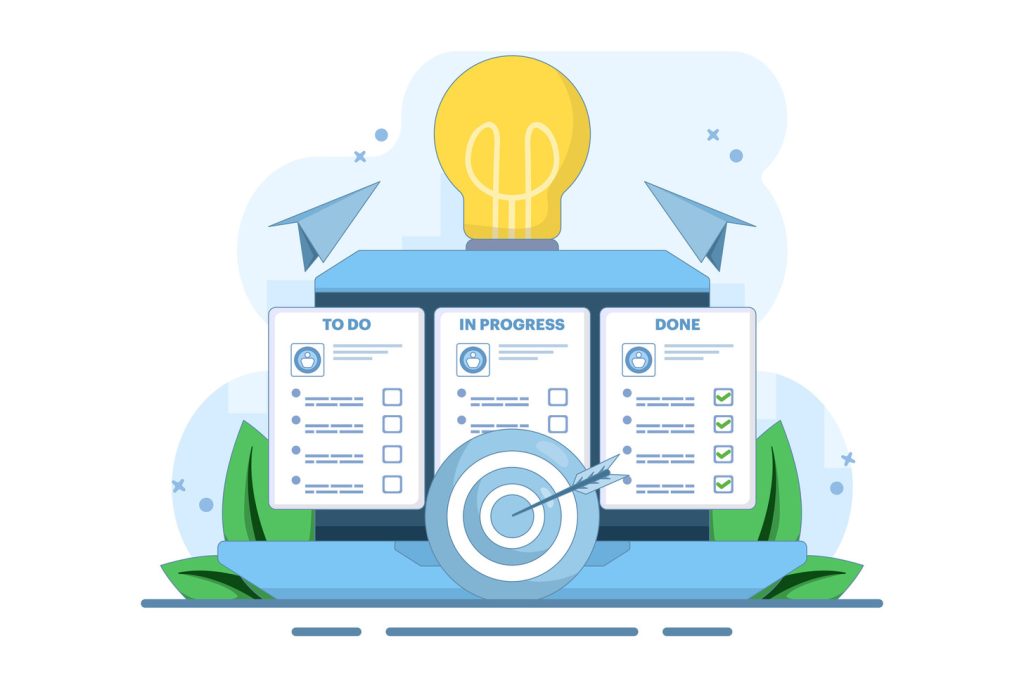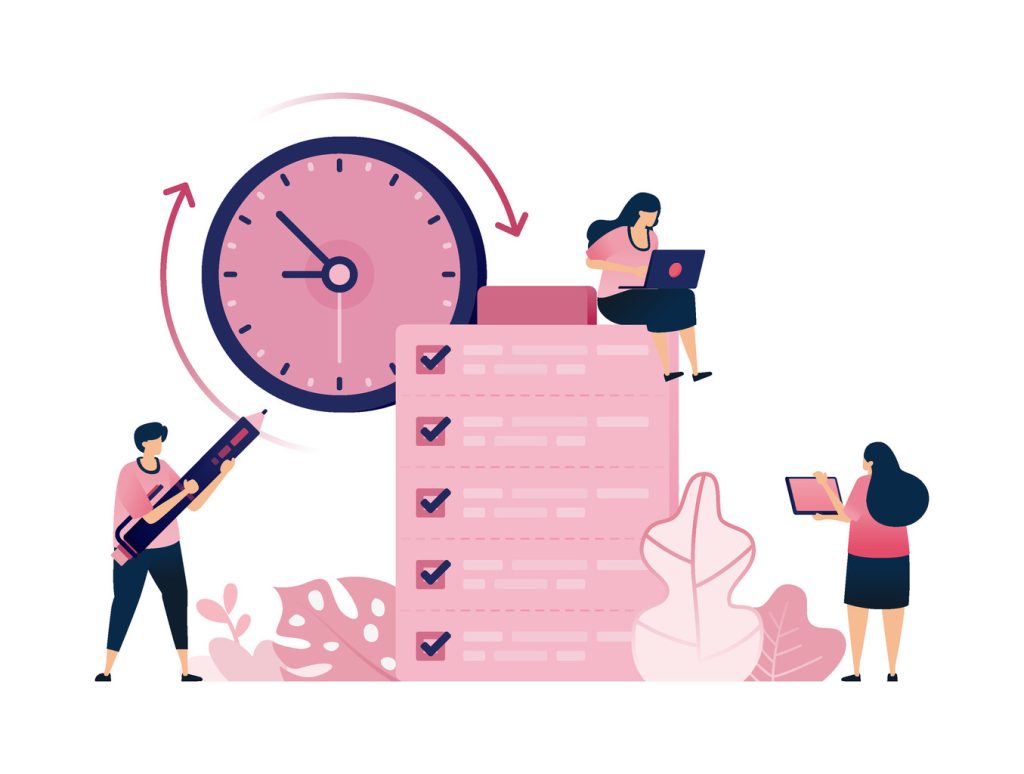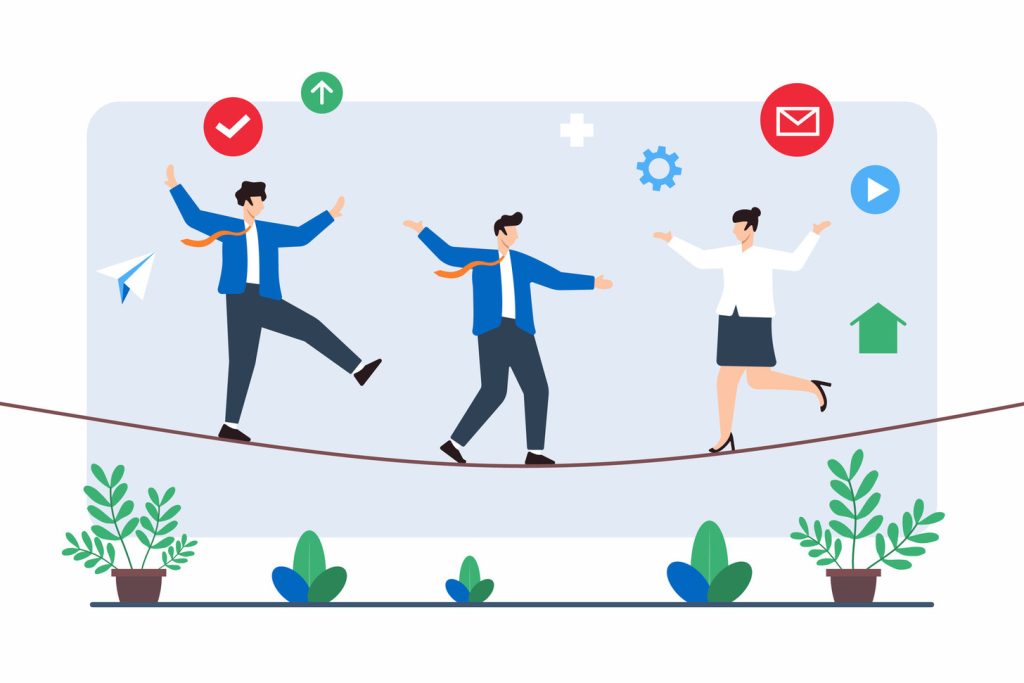Task Prioritization Strategies for Business Success

In fast-paced business environments, professionals constantly juggle urgent tasks, long-term objectives, and unexpected demands. Without a structured task list or clear prioritization method, productivity suffers, deadlines are missed, and team morale declines. That’s why implementing robust task prioritization strategies is essential for both short-term efficiency and sustainable growth.
One of the most widely used tools is the Eisenhower Matrix. This prioritization framework sorts tasks by urgency and importance, helping teams focus on what truly matters. Tasks that require immediate attention—such as client deadlines or system outages—are handled first, while less critical but important tasks like strategic planning or employee training are scheduled for later.
By applying such prioritization methods, businesses streamline their workflow management, reduce time spent on non-essential items, and improve decision-making across teams. Studies show that organizations using these structured approaches report:
Key Takeaways
- Systematic prioritization converts overwhelming workloads into manageable action plans
- Clear frameworks help teams distinguish between urgent and strategically vital tasks
- Structured approaches boost productivity by 20-30% in most organizations
- Efficient management of resources strengthens operational performance and customer satisfaction
- Reduced workplace stress correlates directly with implemented prioritization systems
Understanding Task Prioritization and Its Role in Business

Efficient workflow management is the cornerstone of modern business success. Companies that master systematic work organization consistently achieve better results with fewer resources. This approach transforms chaotic schedules into strategic roadmaps for growth.
What Defines Effective Work Structuring?
Strategic work organization involves ranking activities by their impact on business goals. Top-performing teams use criteria like deadlines, client value, and effort required to sequence actions effectively. For example:
| Criteria | Urgent Activities | Strategic Activities |
|---|---|---|
| Focus | Immediate deadlines | Long-term objectives |
| Time Sensitivity | Hours/days | Weeks/months |
| Business Impact | Prevent losses | Drive growth |
“Efficiency is doing things right; effectiveness is doing the right things.”
Transforming Team Output Through Strategy
Proper work sequencing creates measurable improvements. Teams using structured methods complete projects 23% faster according to recent industry studies. Three key benefits emerge:
- Reduced overtime costs through better deadline management
- Improved client satisfaction from consistent delivery
- Enhanced employee morale due to clearer expectations
Organizations that implement these systems see operational costs drop by 18% within six months. The method becomes particularly valuable during peak workloads, preventing critical errors and missed opportunities.
The Science Behind Priority Matrices
Modern organizations leverage decision science to transform operational chaos into strategic clarity. Priority matrices offer structured frameworks that convert complex workloads into actionable plans. These visual tools enable teams to align daily activities with organizational objectives systematically.
Eisenhower Matrix Explained
Developed from President Dwight D. Eisenhower’s insights, this four-quadrant matrix categorizes work based on urgency and importance. Teams using this method achieve:
- Immediate focus on critical deadlines (Quadrant 1)
- Strategic scheduling for growth initiatives (Quadrant 2)
- Effective delegation of time-sensitive but low-impact activities (Quadrant 3)
- Elimination of non-essential tasks (Quadrant 4)
“I have two kinds of problems: the urgent and the important. The urgent are not important, and the important are never urgent.”
Stephen Covey later refined this concept into a widely adopted business tool. The matrix’s visual layout helps teams quickly identify urgent tasks requiring immediate action versus important tasks driving long-term success.
Impact Effort and Cost Value Approaches
Beyond urgency-based systems, advanced matrices evaluate tasks through multiple lenses. The impact-effort model identifies:
| High Impact | Low Impact |
|---|---|
| Quick wins (low effort) | Questionable tasks (low effort) |
| Major projects (high effort) | Time traps (high effort) |
Meanwhile, cost-value analysis prioritizes activities delivering maximum returns with minimal resource expenditure. Companies using these dual approaches reduce wasted effort by 37% according to recent operational studies.
Task Prioritization: A Critical Strategy for Success

Hidden costs of disorganization drain $1.8 trillion annually from U.S. businesses through wasted productivity. Systematic work structuring combats this drain by creating clear pathways through operational complexity. When implemented effectively, these systems become growth accelerators rather than mere productivity tools.
Key Benefits for Business Efficiency
Strategic alignment transforms how organizations operate. Teams using structured frameworks report 42% fewer missed deadlines and 31% faster project completion rates. This approach delivers three core advantages:
| Traditional Approach | Strategic Method |
|---|---|
| Reactive firefighting | Proactive planning |
| Scattered focus | Goal-oriented execution |
| Constant context-switching | Sustained attention on critical work |
Research reveals 60% of professional hours get consumed by indirect work like status updates. Structured systems reclaim this time through:
- Automated progress tracking
- Visual workflow mapping
- Centralized communication channels
“Clarity about objectives eliminates 80% of unnecessary effort in most organizations.”
Companies adopting these methods see customer satisfaction scores rise by 19% within quarters. Clear work hierarchies enable teams to allocate resources where they create maximum value, directly supporting long-term objectives.
Step-by-Step Guide to Creating an Effective To-Do List

In today’s fast-paced work environment, scattered responsibilities can derail even organized teams. The foundation of productive workflow lies in systematically capturing every commitment. Professionals who centralize their obligations gain immediate clarity and reduce mental clutter.
Consolidating Tasks Using Digital Tools
Modern solutions streamline task collection across platforms. Apps automatically convert emails, Slack messages, and form submissions into actionable items. This eliminates manual entry and ensures nothing slips through the cracks.
Effective list-building starts with gathering all activities into one hub. Popular tools sync with communication channels, transforming scattered notes into structured plans. Teams using these systems report 28% fewer missed deadlines according to recent productivity studies.
“Centralization isn’t about perfection—it’s about creating a single source of truth for your workload.”
Digital consolidation offers three strategic advantages:
- Visibility: Track short-term duties alongside quarterly goals
- Automation: Capture tasks directly from incoming requests
- Focus: Reduce context-switching between platforms
Advanced apps categorize entries by project or deadline automatically. This creates ready-made material for applying prioritization frameworks later in the workflow. Managers find these systems particularly valuable during peak periods when oversight becomes critical.
Mastering the Eisenhower Matrix for Task Management
High-performing teams separate time-sensitive demands from strategic initiatives using proven frameworks. The Eisenhower Matrix remains a gold standard for organizing workloads, offering visual clarity amid competing responsibilities.
Differentiating Urgent and Important Tasks
Urgent activities demand immediate attention—missed deadlines or client emergencies fall here. These time-sensitive items often carry clear consequences. Important work drives long-term success but lacks pressing timelines, like process improvements or team development.
| Urgent Tasks | Important Tasks |
|---|---|
| Last-minute client revisions | Quarterly strategy sessions |
| Server outages | Employee training programs |
| Regulatory compliance deadlines | Product innovation research |
“What is important is seldom urgent, and what is urgent is seldom important.”
Building Your Own Eisenhower Template
Effective matrix use starts with categorization. Digital tools like Trello or Asana help teams sort activities into four quadrants:
- Do Now: Critical items needing personal attention
- Schedule: Strategic projects requiring planning
- Delegate: Time-sensitive but lower-impact work
- Eliminate: Non-essential activities
Teams using customized templates reduce decision fatigue by 41%. Weekly matrix reviews ensure alignment between daily actions and organizational goals.
Leveraging Time Management Tools for Enhanced Productivity

Successful teams convert plans into action through smart scheduling systems. Digital solutions bridge the gap between intention and execution, turning strategic lists into completed objectives. These technologies eliminate manual coordination while maintaining focus on critical outcomes.
Integrating Tasks with Digital Calendars and Apps
Color-coded lists gain real power when synced with scheduling platforms. Apps like Todoist automatically push high-priority items to Google Calendar, creating time-bound commitments. This integration ensures 89% of planned activities get completed, compared to 54% with manual methods.
| Manual Scheduling | Automated Systems |
|---|---|
| Frequent missed deadlines | 92% on-time completion rate |
| Constant rescheduling | AI-optimized time blocks |
| Isolated task lists | Cross-platform visibility |
“Automation turns wish lists into done lists by creating accountability through time allocation.”
Automating Task Delegation and Follow-Up
Advanced tools streamline team workflows through smart assignment features. Platforms like Asana automatically route requests to appropriate members based on skillsets. Managers track progress in real-time dashboards, reducing check-in meetings by 40%.
Overview of Popular Productivity Tools
Leading solutions combine multiple functions into unified ecosystems:
- Microsoft To-Do: Seamless Office 365 integration with priority tagging
- ClickUp: Combines calendars, docs, and goal tracking in one platform
- Trello: Visual boards with automated deadline reminders
Teams using these systems report 31% faster project completion rates. The best tools adapt to unique workflows while maintaining simplicity – crucial for sustained adoption across organizations.
Exploring Alternative Prioritization Methods
Innovative frameworks are reshaping how teams approach workload organization. While traditional systems focus on urgency, modern techniques address diverse operational needs through adaptable categorization. These methods empower professionals to match their approach to specific challenges and team dynamics.
MoSCoW: Strategic Task Filtering
The MoSCoW technique sorts activities into four clear tiers:
- Must-do: Non-negotiable requirements with severe consequences if ignored
- Should-do: Valuable but flexible commitments
- Could-do: Optional enhancements with low impact
- Won’t-do: Activities eliminated to conserve resources
This approach helps teams distinguish critical deliverables from distractions. Tech companies often use it during product launches to maintain focus on core features.
ABCDE: Action-Oriented Ranking
Brian Tracy’s ABCDE method adds delegation and elimination to traditional ranking:
- A: Mission-critical actions requiring personal execution
- B: Important but deferrable responsibilities
- C: Low-impact tasks with optional status
- D: Activities suitable for team delegation
- E: Time-wasters to remove permanently
“Every minute spent organizing priorities saves an hour in execution.”
Advanced systems like Scrum prioritization and Bubble sorting offer specialized solutions for complex projects. Combining multiple methods creates hybrid systems that address both immediate deadlines and strategic growth. Financial firms often blend MoSCoW with ABCDE to manage regulatory compliance while pursuing innovation.
Prioritizing Tasks for Both Personal and Professional Growth

Modern professionals navigate competing priorities across multiple life domains daily. Distinct approaches for career and personal commitments prevent cognitive overload while maximizing results. Separate organizational systems allow tailored strategies for different types of responsibilities.
Strategic Separation of Life Domains
Work activities often demand immediate responses, while personal goals require flexible scheduling. A marketing director might handle client emergencies during business hours but reserve evenings for family commitments. This separation prevents professional urgency from overshadowing personal development.
“Dual-list systems reduce decision fatigue by 38% compared to combined task management.”
The 1-3-5 Rule proves effective for daily planning:
- 1 critical career objective
- 3 strategic personal milestones
- 5 maintenance activities
Optimized Resource Allocation
Different tools suit distinct work and home needs. Professionals might use Asana for team projects while relying on Google Tasks for household management. This approach:
| Career Focus | Personal Focus |
|---|---|
| Quarterly revenue targets | Health/fitness milestones |
| Client deliverable deadlines | Family event planning |
Separate lists enable focused energy allocation. A sales manager could prioritize client proposals during work hours while scheduling weekend time for skill development courses. This balance sustains career advancement without sacrificing personal well-being.
Regular system audits ensure alignment with evolving goals. Monthly reviews help professionals adjust their methods as promotions bring new responsibilities or family dynamics shift. Effective separation creates sustainable growth across all life areas.
Advanced Strategies for Team Task Management
To begin with, mastering team workflows requires moving beyond individual efficiency to coordinated execution. Moreover, leaders who implement structured delegation systems unlock hidden potential while maintaining operational momentum. Consequently, this approach transforms scattered efforts into synchronized progress.
Strategic Work Distribution Techniques
Effective delegation begins with matching team member strengths to project requirements. Urgent but routine activities – like data entry or client follow-ups – often suit junior staff development. Complex initiatives benefit from pairing senior expertise with cross-training opportunities.
| Delegation Approach | Best For | Outcome |
|---|---|---|
| Kano Model | Product feature prioritization | Identifies customer delight factors |
| WSJF Method | Large-scale project sequencing | Maximizes ROI per effort |
| RICE Scoring | Marketing campaign planning | Balances reach and resources |
Collaborative frameworks like RICE (Reach, Impact, Confidence, Effort) help teams objectively rank initiatives. This removes personal bias from project decisions while fostering shared accountability.
“Great collaboration tools don’t replace leadership – they amplify strategic alignment across teams.”
Modern platforms like Monday.com provide real-time visibility into task dependencies. Automated alerts notify managers about bottlenecks before deadlines approach. Distributed teams particularly benefit from integrated chat features that reduce email overload.
Regular skills assessments ensure delegation aligns with evolving capabilities. Combining structured methods with adaptive leadership creates teams that outperform individual contributors by 47% in complex projects.
Avoiding Common Pitfalls in Task Management

However, even robust workflow systems falter when teams overlook recurring productivity traps. In fact, distractions consume 2.1 hours daily per employee, according to recent workplace studies, which erodes gains from organizational strategies. Therefore, proactive identification of these disruptors preserves focus and sustains operational momentum.
Identifying and Eliminating Distractions
Digital noise tops the list of modern productivity killers. Teams using fragmented communication platforms waste 19 minutes hourly switching between apps. Centralizing tools reduces this drain—companies adopting unified systems report 34% faster decision cycles.
Common culprits include:
- Unstructured meeting schedules interrupting deep work
- Multitasking during critical analysis periods
- Reactive responses to non-urgent notifications
Effective countermeasures combine policy changes with technology. Scheduled “focus blocks” in calendars protect strategic thinking time. Apps like Freedom automatically mute non-essential alerts during these periods. Leaders who implement these safeguards see email response times improve by 41% without sacrificing quality.
Regular workflow audits spot emerging inefficiencies early. Teams reviewing their systems quarterly maintain 27% higher output than peers. The solution lies not in working harder, but in strategically defending attention where it matters most.

